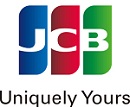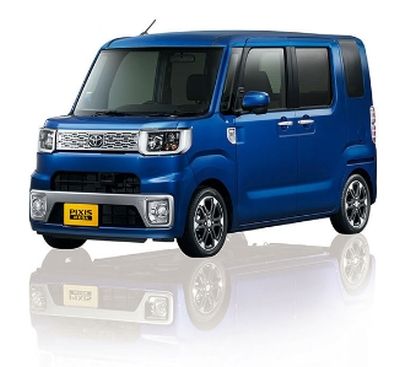![]()
TOKYO, Jun 26, 2015 - (JCN Newswire) - Showa Denko (SDK) (TOKYO:4004) decided at its board meeting today to split and transfer its phenolic resin business to its wholly owned subsidiary AICA SDK PHENOL CO.,LTD. (AICA SDK PHENOL). SDK and AICA SDK PHENOL today concluded an absorption-type company split agreement. SDK took these steps as parts of the procedure for transferring its phenolic resin business to Aica Kogyo Company, Limited (Aica) (TOKYO & NAGOYA:4206), that SDK announced on April 27, 2015.
Since this is a case of "simplified absorption-type company split" involving SDK and its wholly owned subsidiary, part of the details are omitted from the scope of disclosure.
1. Purpose of company split
Phenolic resins have wide ranging uses including electronic materials, housing equipment, and paints. SDK has been providing its domestic customers with phenolic resins in various states such as liquid, lumps, powder, and grains. However, the size of the domestic market for industrial phenolic resins has been a little less than 100,000 tons a year for some years now. In order to pursue further growth of this business in the future, it is necessary for phenolic resin manufacturers to make inroads into the foreign markets which are expected to grow.
Under the circumstances, SDK had already concluded the final agreement with Aica, which actively promotes phenolic resin business overseas, to transfer SDK's phenolic resin business to Aica. Prior to the transfer of its phenolic resin business to Aica, SDK is scheduled to split and transfer the business to AICA SDK PHENOL on September 1, 2015, and transfer 85% of the shares of AICA SDK PHENOL to Aica on that day.
2. Outline of company split
(a) Schedules
Today, SDK approved the absorption-type company split agreement at its board meeting, and AICA SDK PHENOL approved the same agreement at its board meeting and shareholders' meeting. Also today, the agreement was concluded between the two companies. The agreement is scheduled to take effect on September 1, 2015.
Note: For SDK, the splitting company, this transaction falls under the category of a simplified company split according to Paragraph 2, Article 784 of the Companies Act. Thus SDK will not refer the company split agreement to its shareholders' meeting for approval.
(b) Method of split
This will be an absorption-type company split, with SDK serving as the splitting company and AICA SDK PHENOL as the succeeding company.
(c) Allotment of AICA SDK PHENOL shares following the company split
AICA SDK PHENOL will deliver 100 common shares to SDK at the time of the absorption-type company split.
(d) Change in capital stock following the split
There will be no increase or decrease in the mount of SDK's capital stock.
(e) Rights and obligations to be transferred
With regard to the rights and obligations pertaining to SDK's phenolic resin business, AICA SDK PHENOL will succeed to all of these rights and obligations.
(f) Prospects for the discharge of liabilities
As for the liabilities AICA SDK PHENOL will assume following the absorption-type company split, we consider that there will be no problem with regard to their discharge.
3. Profile of the two companies involved in the company split agreement (As of June 26, 2015)
- Splitting company
Company name: Showa Denko K.K.
Head office: 13-9, Shiba Daimon 1-chome, Minato-ku, Tokyo
President: Hideo Ichikawa
Scope of business: Production and sale of petrochemicals, gas products, specialty chemicals, electronics, inorganics, aluminum, etc.
Capital stock: 140,564 million yen
Establishment: June 1, 1939
No. of shares issued: 1,497,112,926
Accounting term: Ending December 31
Major shareholders:
- The Master Trust Bank of Japan (Trust Account) 4.30%
- Japan Trustee Services Bank (Trust Account) 4.17%
- Fukoku Mutual Life Insurance 3.86%
- Dai-ichi Life Insurance 2.52%
- Sompo Japan NIpponkoa Insurance 2.11%
Net assets: 320,504 million yen (Consolidated)
Total assets: 1,011,083 million yen (Consolidated)
Net assets per share: 210.16 yen (Consolidated)
Net sales: 876,580 million yen (Consolidated)
Operating income: 20,915 million yen (Consolidated)
Ordinary income: 22,102 million yen (Consolidated)
Net income: 3,500 million yen (Consolidated)
Net income per share: 2.38 yen (Consolidated)
- Succeeding company
Company name: AICA SDK PHENOL CO.,LTD.
Head office: 1021-1 Senbongui, Tomizuka-cho, Isesaki City, Gunma Prefecture
President: Nobuhiro Kanai
Scope of business: Production and sale of phenol resin products
Capital stock: 5 million yen
Establishment: May 15, 2015
No. of shares issued: 100
Accounting term: Ending March 31
Major shareholders: Showa Denko 100%
Net assets: 10 million yen
Total assets: 10 million yen
Net assets per share: 100,000 yen
Notes:
Figures for the section of major shareholders for SDK are as of December 31, 2014. SDK holds 68,831,000 shares as treasury stock. However, SDK excluded itself from the above list of top-five major shareholders.
Figures for the sections from net assets through net income per share for SDK are based on its statement of accounts for the fiscal year ended December 31, 2014.
4. Outline of the business to be split
(a) Scope of business subject to split
SDK's production and sale of phenolic resins
(b) Performance of the business division to be split (for the fiscal year ended December 31, 2014):
Net sales: 4,030 million yen
(SDK will stop selling phenol resins as of the effective date, in principle.)
(c) Items of assets and liabilities to be split, and their amounts (as of December 31, 2014):
Current assets: 457 million yen
Noncurrent assets: 1,916 million yen
Noncurrent liabilities: 8 million yen
5. Situation of the listed company and the succeeding company after split
- Listed company
Company name: Showa Denko K.K.
Head office: 13-9, Shiba Daimon 1-chome, Minato-ku, Tokyo
President: Hideo Ichikawa
Scope of business: Production and sale of petrochemicals, gas products, specialty chemicals, electronics, inorganics, aluminum, etc.
Capital stock: 140,564 million
Accounting term: Ending December 31
- Succeeding company after absorption-type company split
Company name: AICA SDK PHENOL CO.,LTD.
Head office: 1021-1 Senbongui, Tomizuka-cho, Isesaki City, Gunma Prefecture
President: Nobuhiro Kanai
Scope of business: Production and sale of phenol resin products
Capital stock: 5 million yen
Accounting term: Ending March 31
6. Future prospect
This company split will have only slight influence on SDK's performance. There is no change in our consolidated performance forecast for 2015 due to this absorption-type company split.
Press release: www.sdk.co.jp/assets/files/english/news/2015/20150626_sdknewsrelease_e.pdf
About Showa Denko
Showa Denko K.K. ('SDK'; TSE: 4004, US: SHWDF) is a major manufacturer and marketer of chemical products serving a wide range of fields ranging from heavy industry to the electronic and computer industries. SDK makes petrochemicals (ethylene, propylene), aluminum products (ingots, rods), electronic equipment (hard disks for computers) and inorganic materials (ceramics, carbons). The company has overseas operations and a joint venture with Netherlands-based Montell and Nippon Petrochemicals to make and market polypropylenes. In March 2001, SDK merged with Showa Denko Aluminum Corporation to strengthen the high-value-added fabricated aluminum products operations, and is today developing next-generation optical communications-use wafers. For more information, please visit www.sdk.co.jp/english/.
Contact:
Public Relations Office
Phone: 81-3-5470-3235
Copyright 2015 JCN Newswire. All rights reserved. www.jcnnewswire.com


























